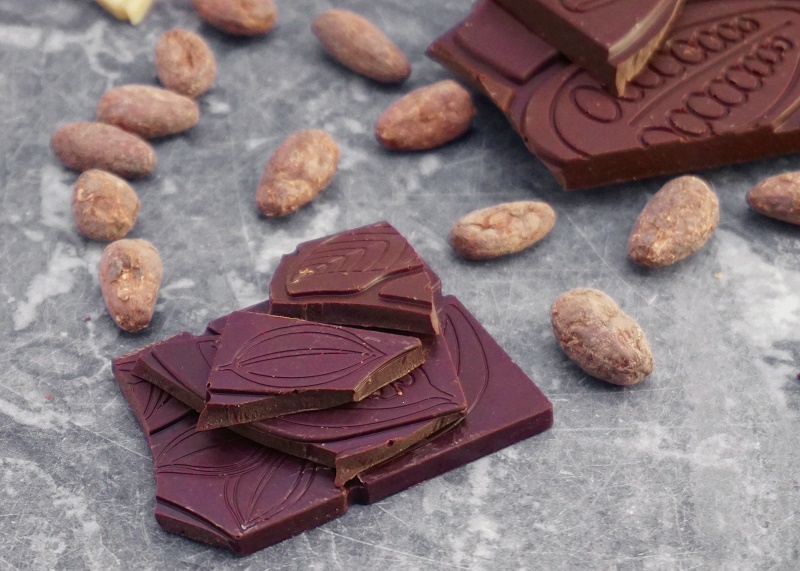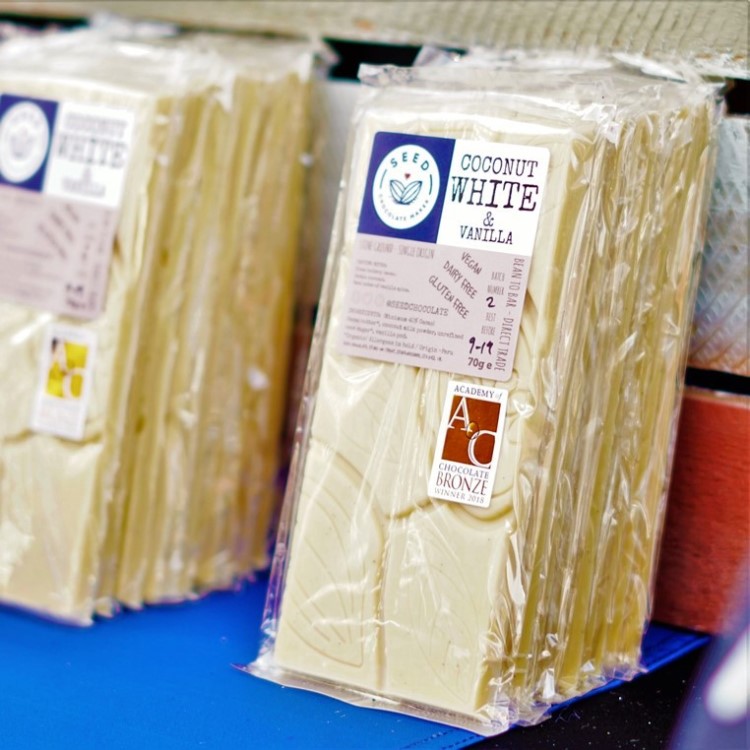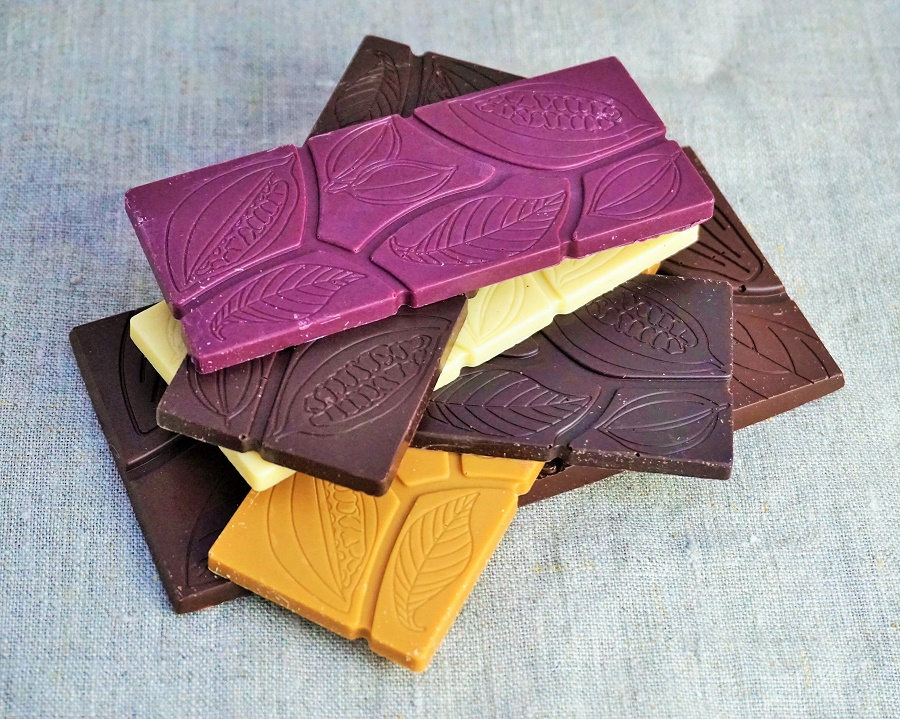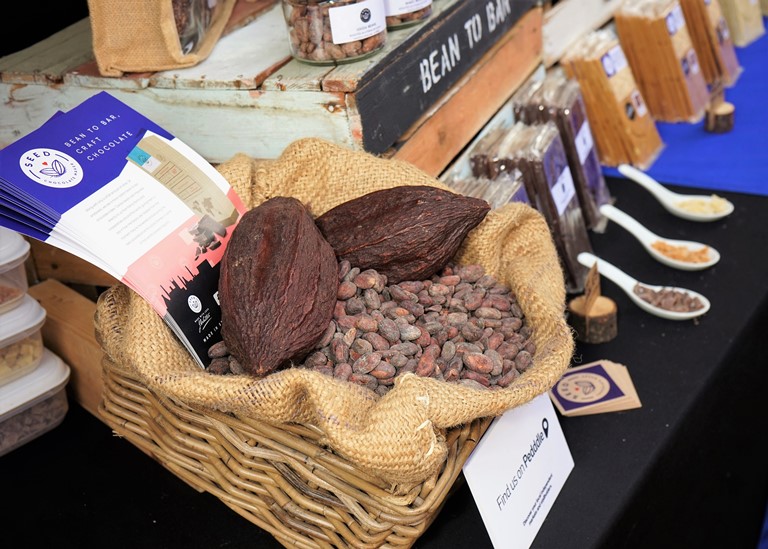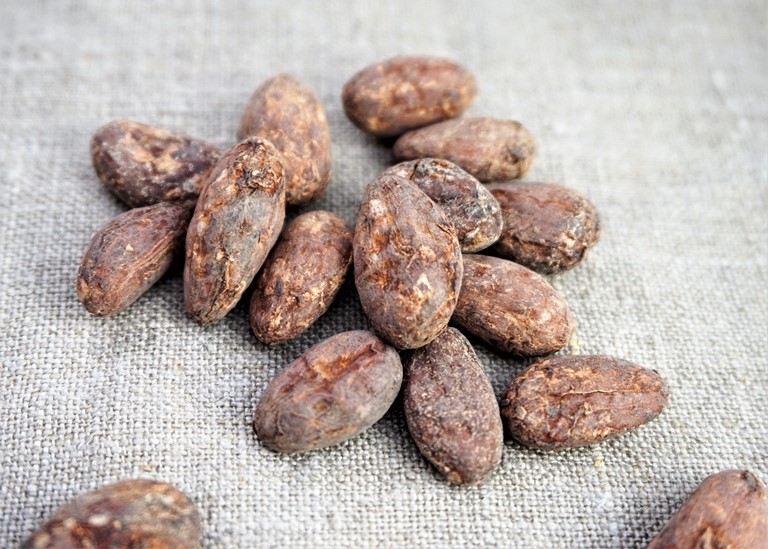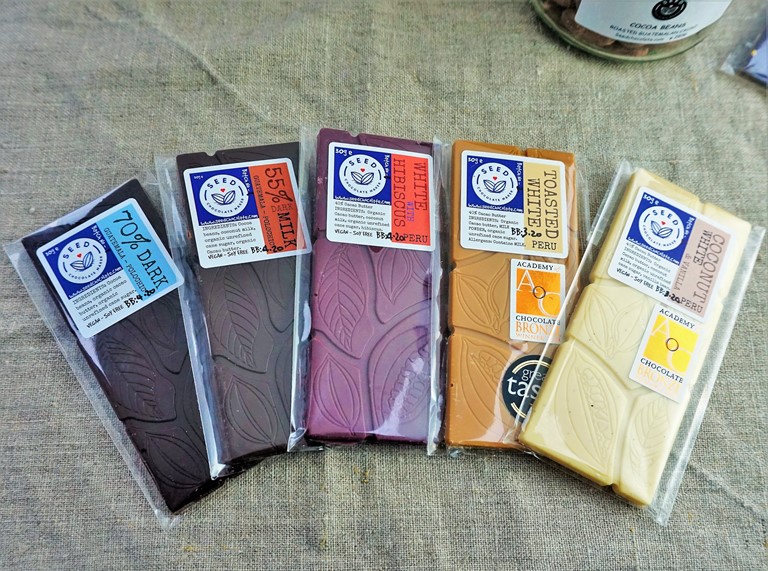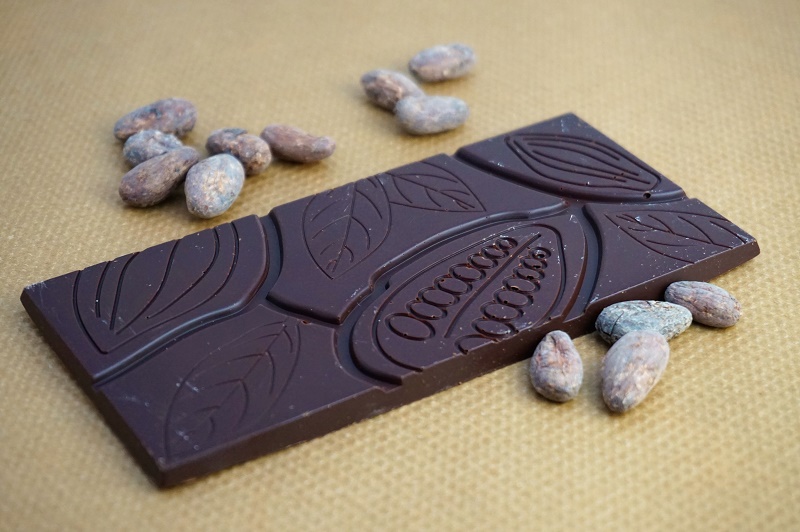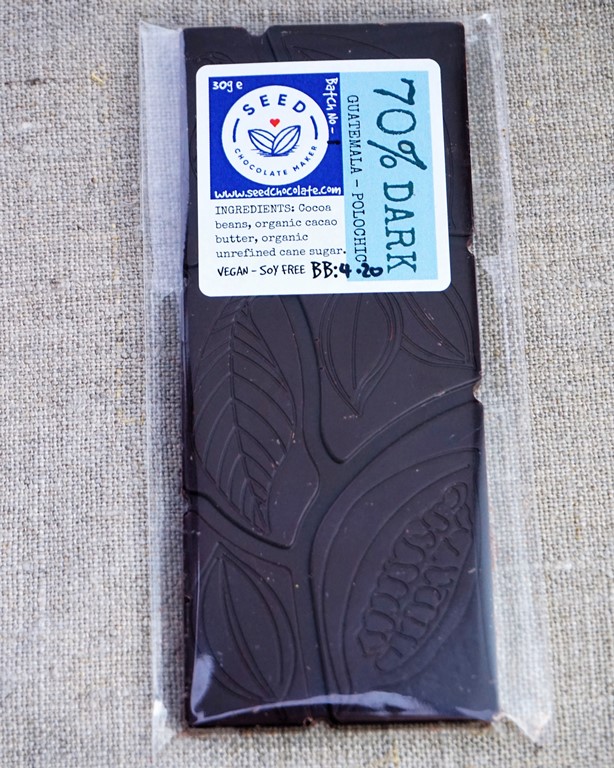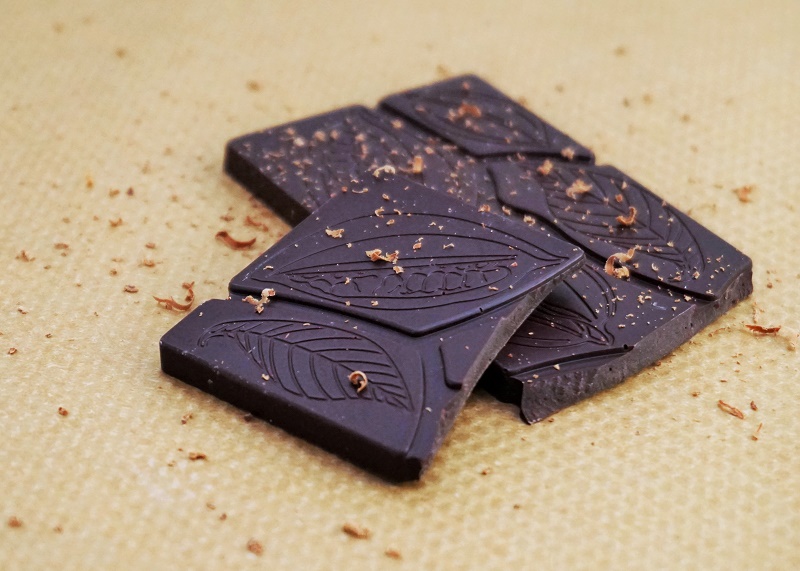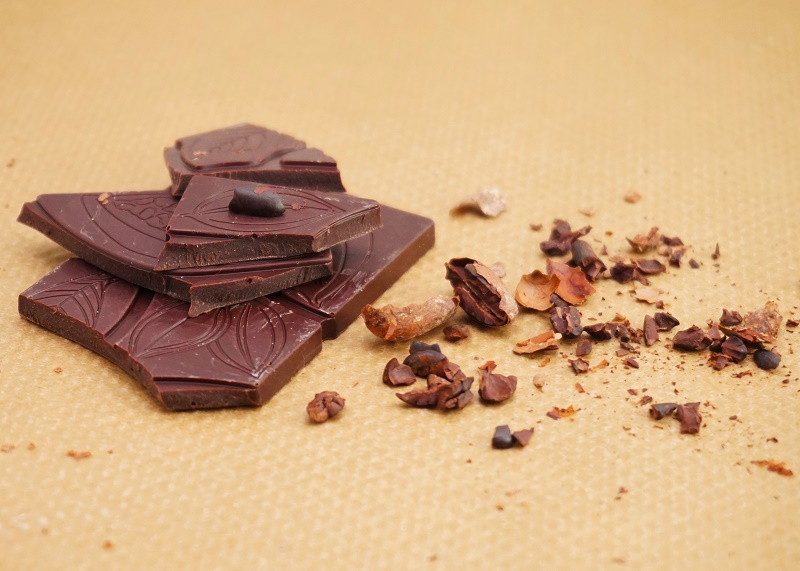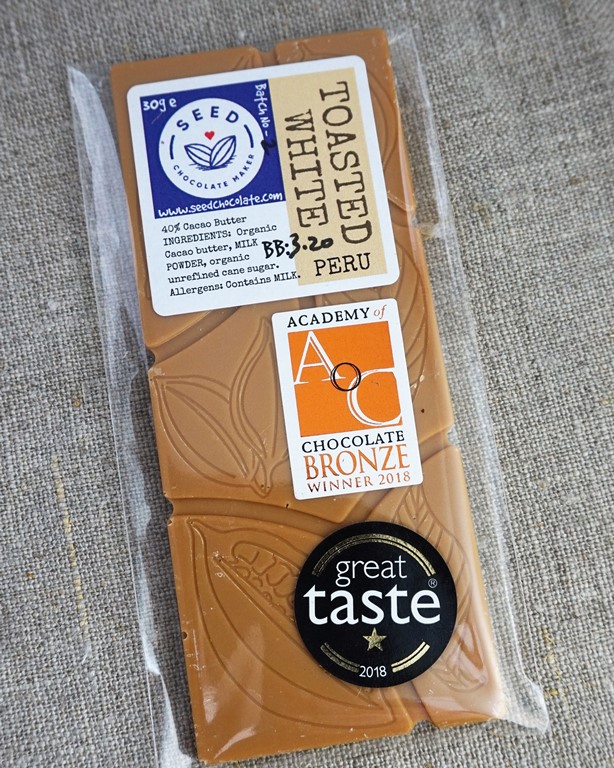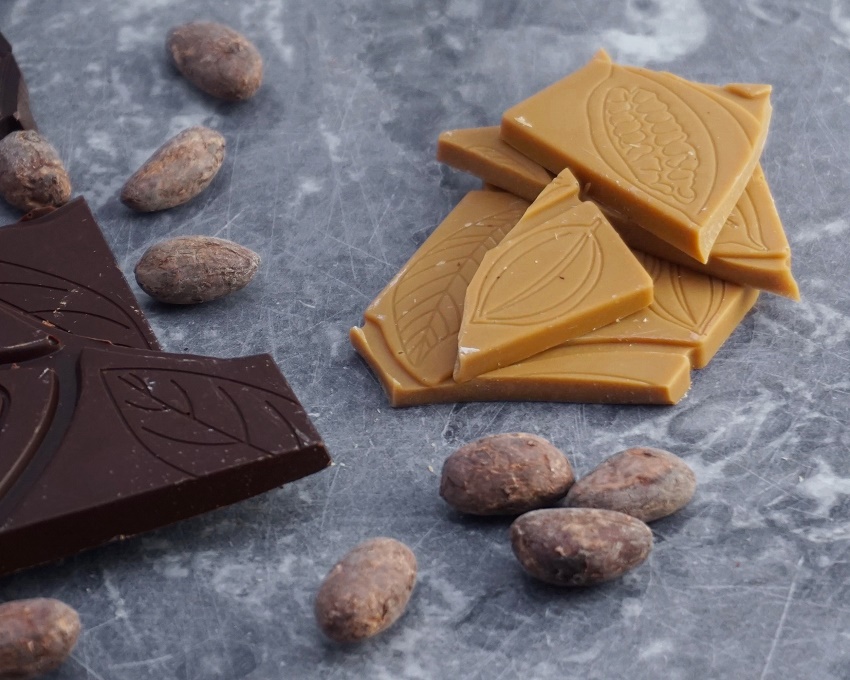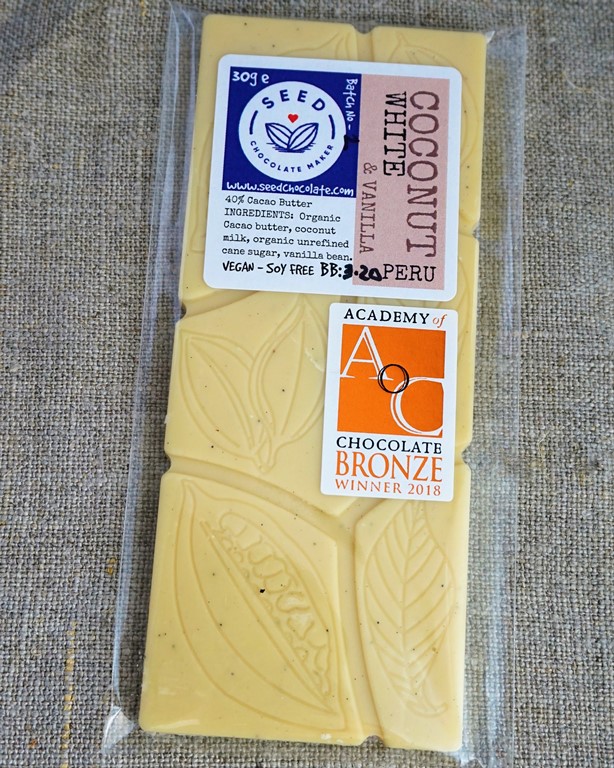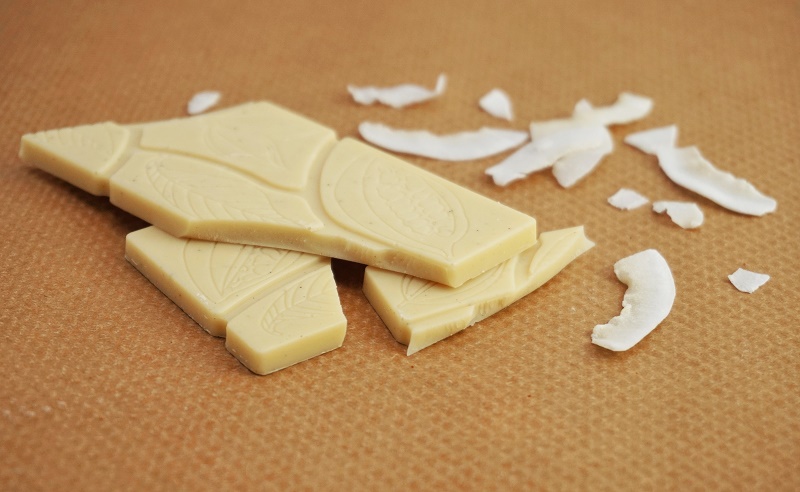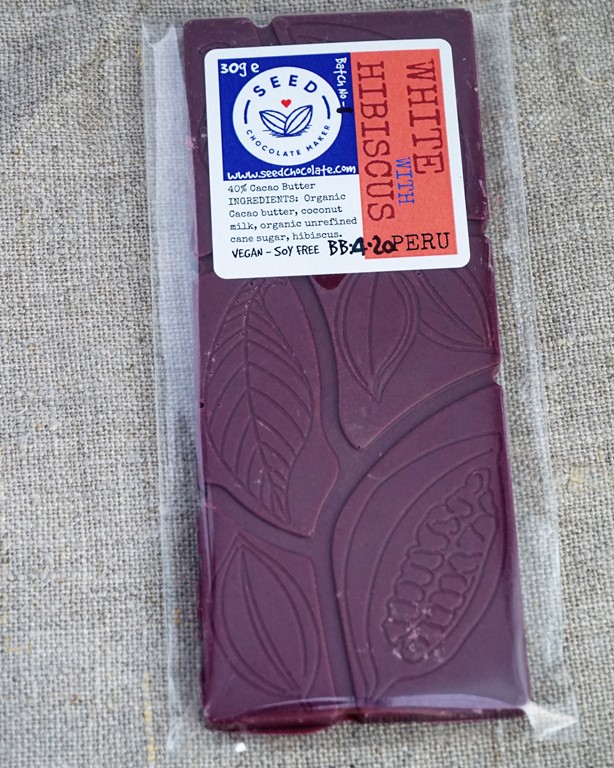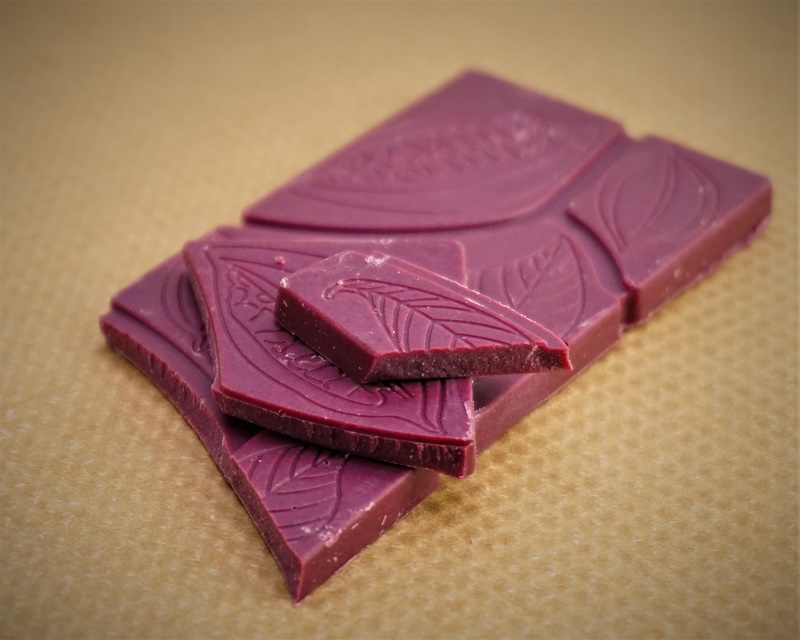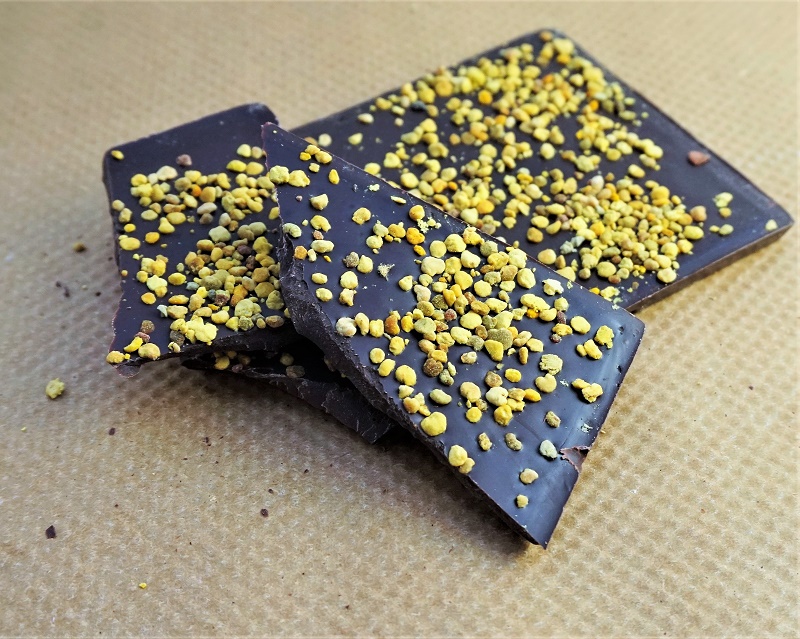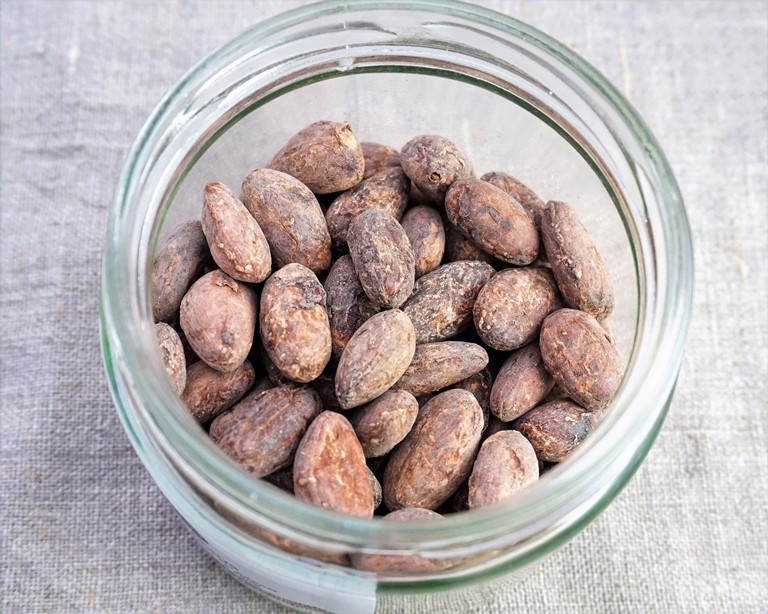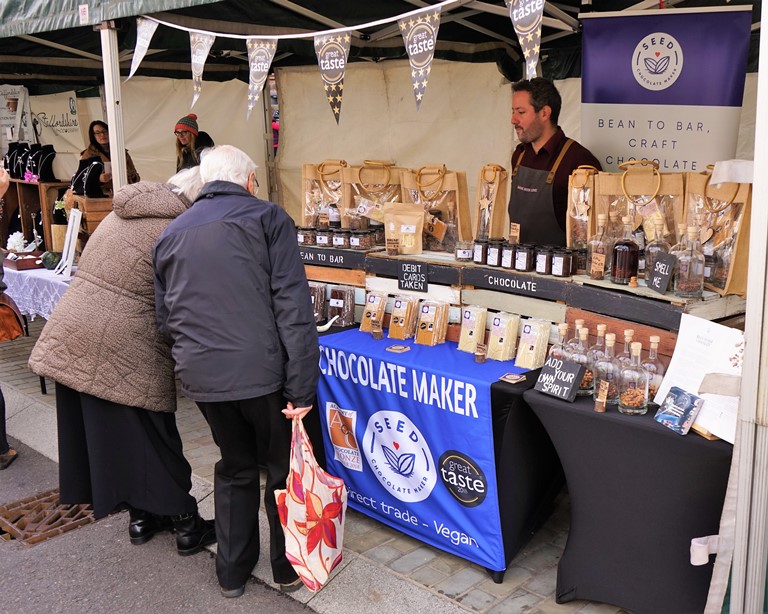Seed Chocolate: Bean to Bar
Seed Chocolate is one of only a handful of ‘bean to bar’ chocolate makers in the UK. Importing cacao beans directly from family farms and cooperatives, they make their unique, award-winning chocolate from scratch in my home county of Staffordshire. In this post I’ll tell you all about them and conduct my own taste test of their quality chocolate.
A CHOCOLATE JOURNEY
Until relatively recently, chocolate production was one of those things I hadn’t given a great deal of thought to. I knew that the big name, chocolate confectionery bars we’re all familiar have very little actual chocolate in them. I also knew that bars of chocolate boasting big numbers on the front like 70%, 85% and 90% cocoa solids were ‘better’, with some people even regarding them as having positive health properties. But I often found them rather bitter.
Consequently, if I was going to treat myself to chocolate, or give as a gift, I thought the only real choice were ones handmade with quality Belgian chocolate and natural fillings, perhaps from the likes of Misco’s Chocolates in Leek (still one of my favourites, actually).
But then I met the founder of Seed Chocolate and it turned out that I really didn’t know much about chocolate at all. And that’s despite my eating it, in one guise or another, for over forty years. From Seed Chocolate I learnt that, once you enter the world of the bean to bar, craft chocolate maker, there’s a whole new host of possibilities.
SEED CHOCOLATE
I first heard about Seed Chocolate when I met its owner, James Walter, at the studios of BBC Radio Stoke. Like James, I was a guest on what was then the station’s new local food and drink programme, The Takeaway. We’d got chatting while waiting for our turns to go on, and I found myself being fascinated by the subject. It probably helped that James was sitting arranging tempting little piles of chocolate, ready for tasting.
In just a few short minutes I’d learnt a lot about chocolate so, hearing that one of the places James and his partner Mel sold their bars was at my local market in Leek, I resolved to go along and find out (and eat) more.
ARTISAN, AWARD-WINNING
If you want to know all about chocolate then James Walter is your man. His knowledge and enthusiasm for the subject shine out. As I’ve found talking to other small producers, you can go along with your list of prepared questions, but you barely need to look at them. That’s because, once they get going, the true artisan usually can’t stop themselves sharing their love of what they do.
A former chef, James started Seed Chocolate less than eighteen months ago. In that time his chocolate has won three bronze awards from the Academy of Chocolate, two Great Taste Awards from the Guild of Fine Food and, in October 2018, Seed Chocolate was named Specialist Food & Drink Retailer of the Year at the Taste of Staffordshire Good Food Awards.
So what makes Seed Chocolate so special?
BEAN TO BAR
As I’m sure you know, the characteristics of a particular wine are often said to be determined by the terroir or physical characteristics of a place such as the soil and climate. Similarly, in artisan cheese making, the milk and therefore the end product will be affected by landscape, weather, soil, the animals and what they feed on and drink at different times of year, along with the hand of the individual cheese maker.
In the same way, a ‘bean to bar’ craft chocolate maker like Seed Chocolate has the ability to influence the final product at every stage of the process. Selecting which cacao beans to use, with their individual characteristics, is the first stage in that journey to creating a chocolate that’s unique.
Seed Chocolate imports cacao beans direct from family farms and cooperatives. James feels that direct trading ensures farmers receive the best possible price and gives them a say in how their product is treated. He’s currently using beans from Guatemala and Peru but has plans to source from a wider range including Vietnam, Haiti and Mexico.
CRAFT CHOCOLATE
The farmers have their role to play in determining the characteristics of the finished article too, and not just in growing and harvesting the beans. Did you know that chocolate is a fermented product? I didn’t. It’s the farmer’s job to ferment the beans as well as dry and clean them. Once the processed cacao beans arrive at Seed Chocolate’s base in Longton, Stoke on Trent, the next step is roasting.
After roasting comes removing the husk, or winnowing. The beans are then stone-ground over several days, after which James ages the chocolate. Prior to the final molding and packaging comes the step that watchers of TV cookery programmes will probably have heard of: tempering. This gives the chocolate a good shine and also a satisfying snap when broken.
Thus the progression from bean to bar, starting on the farm, is a complex one. But it’s precisely this process which gives the craft chocolate maker scope to create an individual range of products. Unlike the standardized commodities of the giant chocolate confectionery companies, this also allows for variability which I think is part of the charm of artisan production.
THE TASTE TEST
Seed Chocolate produces a range of bars and in this taste test I’ve tried to cover all of those currently available. What with one thing and another, I had to hang on to the bars for a few weeks before I could give them my full attention. But oh my, what a temptation it was not to tuck in! Don’t their beautiful colours look fabulous?
Besides the chocolate bars, I’ve also included in my taste test Seed Chocolate’s roasted cacao beans. I’d never tried this product before, but I’m hooked!
100% CACAO BAR, UNROASTED
Prior to this taste test, the highest cocoa in a bar I’d eaten was ninety per cent. That was a big name brand, but I can’t honestly say I particularly enjoyed it. Yes, there was the intense chocolate taste. However, it was overwhelmed with a bitterness that wasn’t pleasurable to me.
Consequently, I really wasn’t expecting to like Seed Chocolate’s bar that was one hundred per cent stone-ground cacao. Yes, that’s one hundred per cent per chocolate. No sugar. Nothing. For this one, James doesn’t even roast the beans. He explained that unlike some producers, he doesn’t call this raw chocolate. That’s because, technically, foods are raw only if treated at forty eight degrees centigrade or less, whereas fermentation takes place at around seventy degrees. I like that sort of exactitude.
For the unroasted bar, the fermented, sun-dried beans are simply de-husked, stone-ground and aged for a month.
As you’d expect from one hundred per cent cacao, there’s an intense chocolatey taste. But, letting a piece melt slowly on my tongue (and dark chocolate melts noticeably slower than milk or white), I found it much less harsh than big brand chocolate containing much lower amounts of cocoa.
Of course, to really like this you must be a fan of very dark chocolate. For me, it’s an interesting product that makes you contemplate what chocolate is about, rather than one I would eat regularly. But if it’s a quality, intense, pure cacao flavour you’re after, then this is definitely for you.
70% DARK
For Seed Chocolate’s seventy per cent dark chocolate, the beans come from the Polochic valley in Guatemala. The ingredients are simply cocoa beans, cacao butter and unrefined cane sugar.
When I took this bar from its packet, I got an immediate rich, chocolately aroma. As it melted in my mouth, a complex fruitiness developed, reminding me of raisins.
James had said that chocolate often evoked in people memories of foods eaten in childhood. But I almost didn’t want to tell him that, despite loving this chocolate, it made me think of Old Jamaica, a mix of dark and milk chocolate, studded with raisins flavoured with fake rum. As a youngster, I thought it very sophisticated to like it. I actually bought some on a whim about five years ago when I spotted it in a local shop. To say it was disappointing would be an understatement. To my adult palate, it was vile.
My other half, joining me in the taste test, said the seventy per cent had a mild ‘stoutiness’, like Beamish or Murphy’s. Not sure what that says about his childhood.
For me, this was my perfect higher-cacao bar. Rich and chocolatey, but not at all harsh.
55% DARK MILK
You might have assumed, as I initially did, that a milk chocolate would not be suitable for vegans. However, like all but one of Seed Chocolate’s bars, the fifty five per cent Dark Milk contains no animal products.
The ‘milk’ is provided by one of my favourite things, coconut milk. Oh how I wish, when I was vegan in the late 1980s, that coconut milk had been widely available. Where I lived, in a small town in the East Midlands, we didn’t even see peppers and garlic let alone something as wildly exotic as coconut milk. But this lovely, rich creamy stuff would have made such a difference to my diet.
At that time, the only ‘chocolate’ you saw in ‘health food’ shops (where you had to hang out if you followed such an unheard of diet) was made with carob. If you haven’t tried carob, please don’t. It’s the devil’s spawn. I’d honestly rather eat a giant bar of Old Jamaica than even a small amount of carob ‘chocolate’.
I’m not exaggerating either. My other half was vegan around the same time as me (although we didn’t know each other then) and tells the terrible story of when he bought carob Easter eggs for his nieces and nephews. Their happy faces turned tearful as, biting into what they thought was real, scrummy chocolate, they found they’d been dreadfully betrayed. That’s how nasty carob is. It makes children cry.
So, without wanting to sound like a moaning old codger (oh, alright then), I have to say that young vegans today don’t know they’re born. That’s if Seed Chocolate’s delicious vegan Dark Milk chocolate is anything to go by anyway.
Again made with Guatemalan cacao from the Polochic valley, it contains only beans, coconut milk, sugar and cocoa butter.
Eaten immediately after the seventy per cent dark, the Dark Milk has a lovely creaminess with a definite, sweet caramel flavour. I can taste the coconut too, but it’s a subtle back note and isn’t overwhelming. I guess the coconut milk also contributes to the beautiful way it melts on the tongue.
In short, a fabulous, accessible chocolate that lots of people will love. If it had been around way back, no doubt my other half would’ve been lauded as a favourite uncle rather than despised as a thoroughly evil one.
TOASTED WHITE
Containing forty per cent cold pressed organic cacao butter, milk powder and sugar, Toasted White is currently Seed Chocolate’s only non-vegan chocolate.
In appearance, it looks rather similar to a Caramac – a ‘chocolate’ bar actually containing no chocolate which, bizarrely in my view, was popular in the 1960s, 70s and 80s.
However, unlike the Caramac, Toasted White has impeccable credentials. It’s made from rare and highly regarded Criollo cacao butter, sourced from the Peruvian Amazon. The bar’s quality was recognised at the 2018 Academy of Chocolate’s awards where it gained a bronze. It also achieved one star in the Guild of Fine Foods’ Great Taste awards.
I’d like to tell you exactly how the white chocolate is toasted, but I can’t. It’s a secret.
But what I can say is that, as with all these chocolates, don’t go mad, crunching your way through them. To get the full flavour and nuance, let a piece melt slowly on your tongue.
Going back to how chocolate often evokes memories of other foods, this time it was Murray Mints. The advertising jingle for these caramel flavour mints was ‘Murray Mints, Murray Mints, too-good-to-hurry mints’. And you don’t want to hurry with the Toasted White either.
Take your time, and you’ll first get a delightful buttery, light caramel. Then, as it melts, I found the toasted flavour coming through more strongly. A really pleasurable experience that lovers of white chocolate will appreciate.
COCONUT WHITE & VANILLA
Seed Chocolate’s white bar is another Academy of Chocolate bronze award winner. Its ingredients are very similar to the Toasted White too, including forty per cent Criollo organic cacao butter.
However, this one’s vegan, with coconut milk replacing the dairy milk powder. You’ll also see speckles of vanilla seed dotted about.
As you’d expect from a quality white chocolate, this is rich, creamy and melts easily in the mouth. You’re not whacked in the face with coconut or vanilla, both of the flavourings being quite subtle. Personally, I could probably take a bit more coconut. But then I’m absolutely mad on the stuff whereas a very coconutty white chocolate might not be to everyone’s taste.
WHITE WITH HIBISCUS
How could anyone not love a purple chocolate bar?
Seed Chocolate’s White with Hibiscus is a variation on their Coconut White & Vanilla. The difference is that here the vanilla is replaced with natural hibiscus flowers which have been stone-ground with the chocolate.
As with the other white chocolates, this one melts more quickly, but do try to take your time. If you do, you’ll be rewarded with great complexity of flavour. For me, it produced a cycle of flavours. First off it was coconut, coming from the coconut milk. Next it was fruity and sharp with hibiscus. To finish, it was back to coconut again.
I thought this was a great chocolate. It had both the creaminess you’d expect from a white chocolate but also a refreshing acidity from the hibiscus.
I think I’ve only had hibiscus in tea before, either on its own or with rosehip and it’s a very pleasing flavour. Interestingly, in this bar, it reminded us very much of passion fruit with its intensity and sharpness.
70% DARK WITH BEE POLLEN
I think this may not be one of Seed Chocolate’s regular varieties, but I had to pick up a bar of dark chocolate with bee pollen when I spotted it on their stall. The bright yellow pollen looked stunning against the dark chocolate and I don’t recall having tried it before.
To be honest, at first we really weren’t very sure. Other half’s first thought was ‘dry rot in old drawers’ (a wooden chest of drawers, that is, in case you’re wondering). ‘But not in a bad way’, he added.
As the chocolate gradually melted, we grew to like it more and more. After a time, we decided that the thing it reminded us most of was Laphroaig, an incredibly smoky single malt whisky. The first time you try Laphroaig, you may well think, ‘How the hell can anyone drink this stuff? It’s just too much’. But, after a time, you start to love it.
I’m aware that I keep using variations on the word ‘complex’, but it’s so fitting here. Other flavours we picked up on were tobacco and dark cherry.
Maybe you think these descriptions are pretentious and rather fanciful. But, honestly, give at least some of these bars your careful attention and I think you’ll be surprised just how much they offer up.
ROASTED BEANS
To finish my taste test, I want to include the ingredient at the heart of chocolate. Roasted cacao beans.
It was only when I spotted them on Seed Chocolate’s stall that I realised the beans were something you could munch, just as they are. James gave me a couple to try and I couldn’t resist buying a whole jar.
When you take the lid off, you’ll be met with a rich, deeply chocolatey aroma. I guarantee you won’t be able to stop yourself going in for another, closer sniff. Heavenly.
To eat the beans, very gently crush one between two fingers to break off the papery outer husk. It took me a bit of practice, but eventually I was able to extract the dark, shiny nugget all in one piece.
Yes, they taste of chocolate. But the cacao beans have a crispy, crunchy nuttiness too that makes them very moreish indeed. Some individual beans are more bitter, some more acidic, some more chocolatey. Part of the fun is not knowing precisely what you’re going to get.
I’m not too sure about all the health claims made for cacao. I don’t even know if it’s a fruit or seed (a seed from a fruit, I think). But I know these roasted beans make a fabulous treat or gift. And talking of gifts…
CHOCOLATE INFUSED SPIRITS & GIFT BAGS
As I write this, we’re in the final few weeks before Christmas so, besides treating yourself, how about giving Seed Chocolate as presents?
For the person who enjoys a tipple as well as chocolate (who doesn’t?) there’s spirits infused with chocolate. There’s a number of different spirits to choose from, and you’ll get a discount if you buy more than one.
You can get a nice jute gift bag to put the bottle in, or get a large gift bag and fill with your own bespoke choice of chocolate bars, beans and spirit infusion.
For my taste test, with the exception of the one hundred per cent cacao unroasted and the seventy per cent dark with bee pollen, I bought the thirty gram mini bars. These would make excellent stocking fillers if you’re looking for a smaller gift.
WHERE TO BUY SEED CHOCOLATE
You can buy Seed Chocolate products online here or catch them at one of the artisan markets they regularly attend. These include the monthly Totally Locally Leek Sunday Supplement markets and the World of Wedgwood artisan market. Check out forthcoming dates here
If you’re close to Stafford, then you’ll also find Seed Chocolate in the Guildhall Gallery coffee shop.
HIGHLY RECOMMENDED
Discovering Seed Chocolate has been quite a revelation. I’d initially thought that real craft chocolate, especially the higher-cacao content bars, probably wasn’t for me. But that was based on my experience of the mass produced bars which hadn’t been entirely favourable. However, I’ve now learned that artisan chocolate is a different beast entirely.
While I’ll always love handcrafted filled chocolates made with quality Belgian chocolate, my horizons have widened and there’s room for complex, intense ‘bean to bar’ chocolate too.
For such a relatively new company, Seed Chocolate has achieved an awful lot in a short space of time. That includes winning awards at local and national level.
Try some of their unique, artisan chocolate for yourself, and I think you’ll see why.
Highly recommended.
All images in this post are copyright Moorlands Eater except those of Seed Chocolate’s stall which are copyright Ian Dakin Photography
Not to be reproduced without permission


